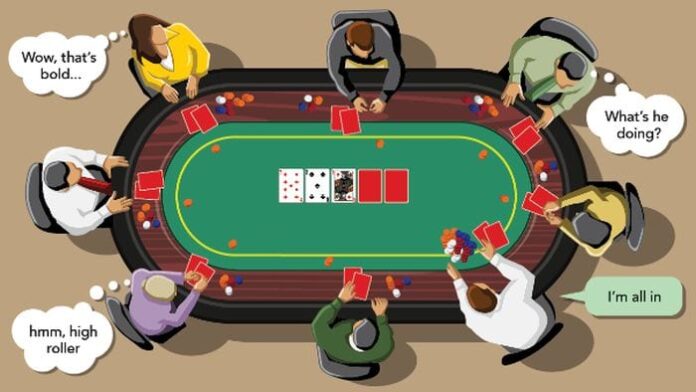When you sit down at the poker table or join an online game, you may have two strategies in mind for focusing your efforts. Which poker strategy is the best one has long been a controversial subject among poker players. There are two main strategies that poker players debate. Game Theory Optimal Strategy and Exploit game plan.
Game Theory Optimal strategy realizes that there is always an optimal decision to make the maximizes the expected value. It is similar to playing the way a computer would play by constantly calculating the possibilities. Poker is not played by robots, however, it is played by humans and humans have habits in how they play. Exploitative play is a game plan that tries to take advantage of these human tendencies and takes advantage of that.
Whether you are a hobby poker player or a pro, here is what you need to know about the strategies, why it isn’t necessary to pick one and how to hone your own playing style for more wins and bigger pots.
Game Theory Optimal Strategy

The idea behind the game theory optimal strategy is that it can’t be exploited by opposing players. Game theory optimal strategy is one of the most used and oldest strategies. This is mostly because the theory of optimal game plan believes that if you perfectly follow the plan, the other players can’t use it against you.
At the most basic level, game theory optimal strategy, or GTO, prevents other players from exploiting your game if you make a specific play either too frequently or not frequently enough. It is a defensive strategy, not an exploitative strategy, aka a plan that aims for maximum profit.
Game theory optimal includes thinking through opponent modeling – thinking through the long-term range of probable hands. The theory is clearly defined by a mathematical framework. To explain the mathematical framework, we could use a simple example.
If A GTO strategy were applied to the rock, paper and scissors game, it would have you pick each position (rock, paper or scissors) one one-third of the time at random. The result would be winning one-third of the time, being tied one-third of the time and losing one-third of the time.

Although GTO strategy can be more complicated when applied to poker, this one does have several rules that an advanced poker player can use. Those rules include a minimum defense frequency, bluff-to-value and mixed frequency plays.
Exploit Strategy
In this plan, you closely watch what your opponents do. You use this information to exploit their tendencies. This is an aggressive plan that tries to attack weaker players. This creates higher variances, where the wins are bigger when you are right, and the losses are larger when you are wrong. The best poker players in the world usually use exploit strategy but it takes years and hundreds of hours of practice to develop this skill at the highest level.
Looking back again at the rock, paper and scissors game, you might notice that a particular opponent picks scissors 40 percent of the time instead of one-third of the time. The exploit strategy can identify this information and use it to your advantage and win 40 percent of the time. On the other hand, nothing stops your opponent from seeing what you are doing in response to their moves, and they could change their plan at any time. Using an exploit strategy opens you up for exploitation, too. For more details on this plan check out this poker strategy guide from 888Poker.com.
Finally, while you may or may not choose to use the exploit strategy, pay attention to if other players are using the exploit plan against you. Concentrate on how other players react to your play and try to understand if they have identified a playing tell or a strategy you are employing. It is always best to leave your competitors guessing on how you are playing.
You Don’t Have to Pick
The good news for you is that you don’t have to pick a single strategy at all. Use a solid and theoretical one to each round of poker you play. This would be using the game theory optimal strategy. When you are able to collect reliable information about your opponents, use it to exploit their actions, aka use the exploit strategy. When you can’t do this, or if you feel that your opponent is on to you, using a game theory approach can serve you well in the meantime. Be flexible and adapt to the game you are playing. Overall, it’s usually best to avoid sweeping changes to your plan. Making incremental changes is better and allows you to keep track of which changes helped you versus harmed you. Additionally, spend time practicing both and understand what is a more natural way for you to play.

Best Practices for Making Adjustments While Playing
You might have gone into a table knowing a little about your opponents. If this is the case it is usually best to start with a GTO poker strategy and then adapt form there. Additionally, if you ever feel uncomfortable or uncertain in your abilities it is often best to revert back to game theory optimal strategy. One of the advantages with the game theory optimal strategy is that you really don’t care how other players play the game. You can always just employ your strategies.
Maybe you had a strategy in mind for what you would do and when you would do it. Unfortunately, your opponent could surprise you with something you’ve never seen before this game. When it’s necessary for you to make adjustments to your strategy, there are some best practices you should follow.
The first is to be careful with adjustments during live poker games. It’s rare to get a big enough amount of data to have expectations around what the others will do. Another best practice is to make inferences on the player pool tendencies. You also need to prepare to return to your default strategy when you see that an adjustment did not work in your favor. Overall, there is no one perfect strategy to poker and you should play in the way that is most comfortable and fun for you. Understand both CTO and exploitative play and when to use each.









